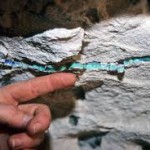Steps to a brand plan.
Here’s how I do it.
1. Observe. As a consultant, observation happens before an engagement and during. Before, observations are used in biz/dev. What’s going on in the culture? What’s going on in the selling culture? The buying culture? These nuggets are the grist for the emails that start a dialogue. Emails explaining what I do for living are “me” focused not “you” focused.
Once engaged, observations are the ebb and flow off the business tide – contextually set up by business fundamentals provided by senior client management. Research, both qual. and quant. come in at this stage, budget permitting.
2. Commune. Unlike anthropological fieldwork, in brand planning we need to commune with those we study. Plumbing, probing, storydoing (thanks Ty), making of friends. This is how we add dimension and luster to our hunting and gathering – talking to people. There are no wrong people.
3. Cull. A cull rack in Great South Bay parlance is the rack that catches the clams of legal edible size. With all observations in (one can observe forever), the cull begins. What to save. Knowing what is important is personal, subjective, objective, scientific and artful. Basically it’s a brain thing. Can’t really be explained. No algo for this.
4. Organize. In my work I often talk about brand planning as an organizing principle. Today I’m thinking about the root word organ. Yes, organ. The business winning elements of the strategy are like organs. They give life to the brand plan. I use 3 brand planks and there are three really important organs. (My brand plan contains one claim, three support planks.) With this structure, the puzzle pieces come together.
5. Package. Brand strategy doesn’t package well. It’s like an early Pearl Jam song, when they weren’t good at endings. The big reveal of a strategy (remember it’s not creative) often feels soft. It feels right, everyone is nodding, but it’s often a soft landing. If I may be crass, it’s kind of blue ballsy. Unlike creative which is more artful and has a hook, brand strategy is only a beginning. It needs great packaging to make it feel more creative. A touch of poetry helps.
This is how I do it. This is how brand strategy at What’s the Idea? is made. Have you a different approach? Peace!







